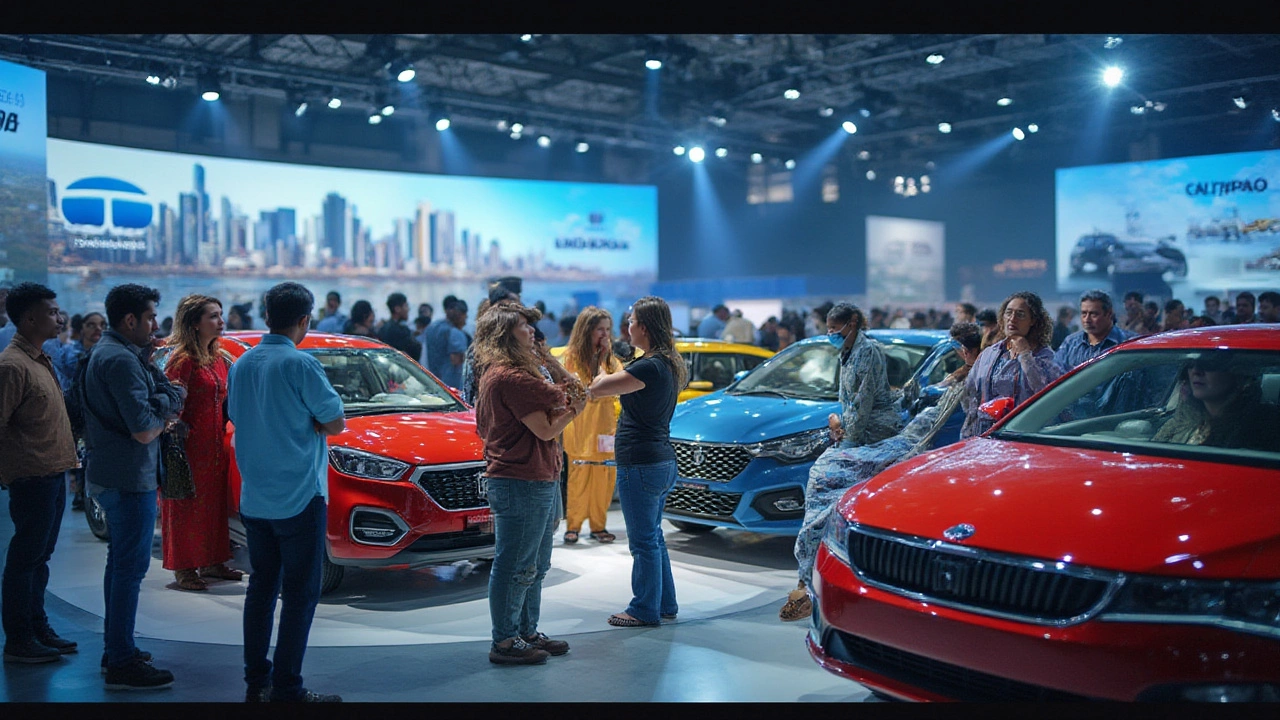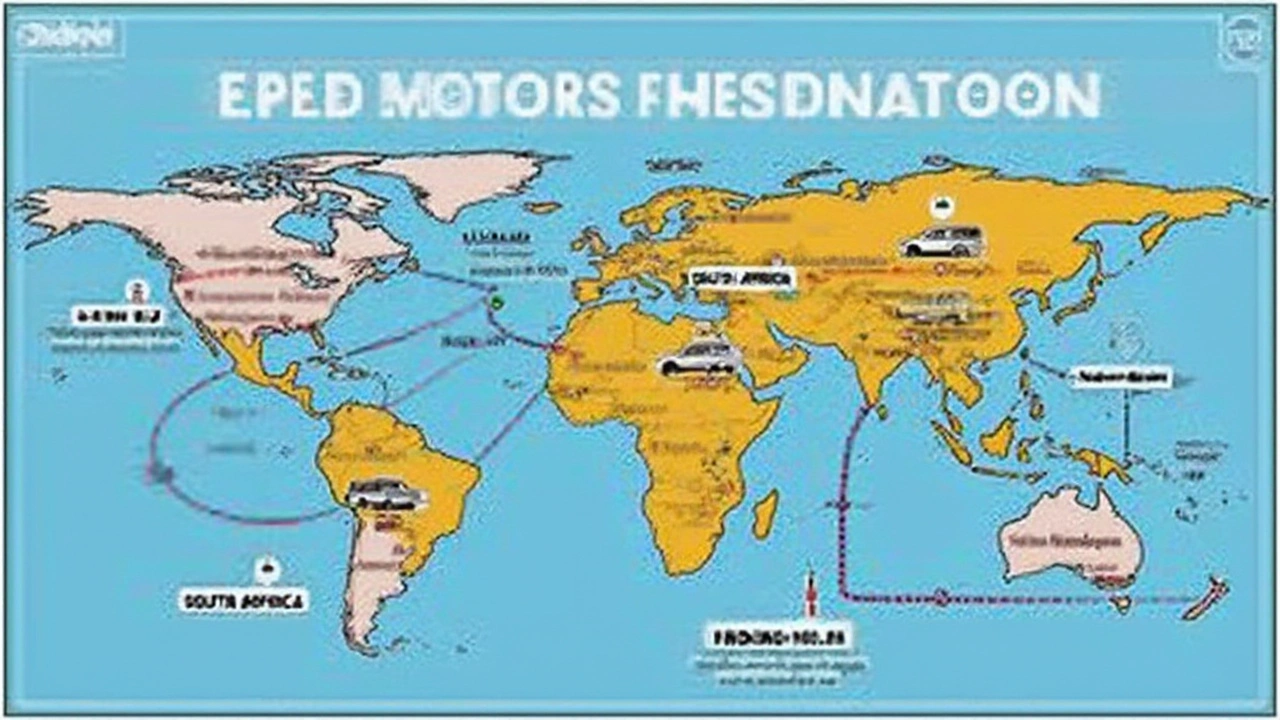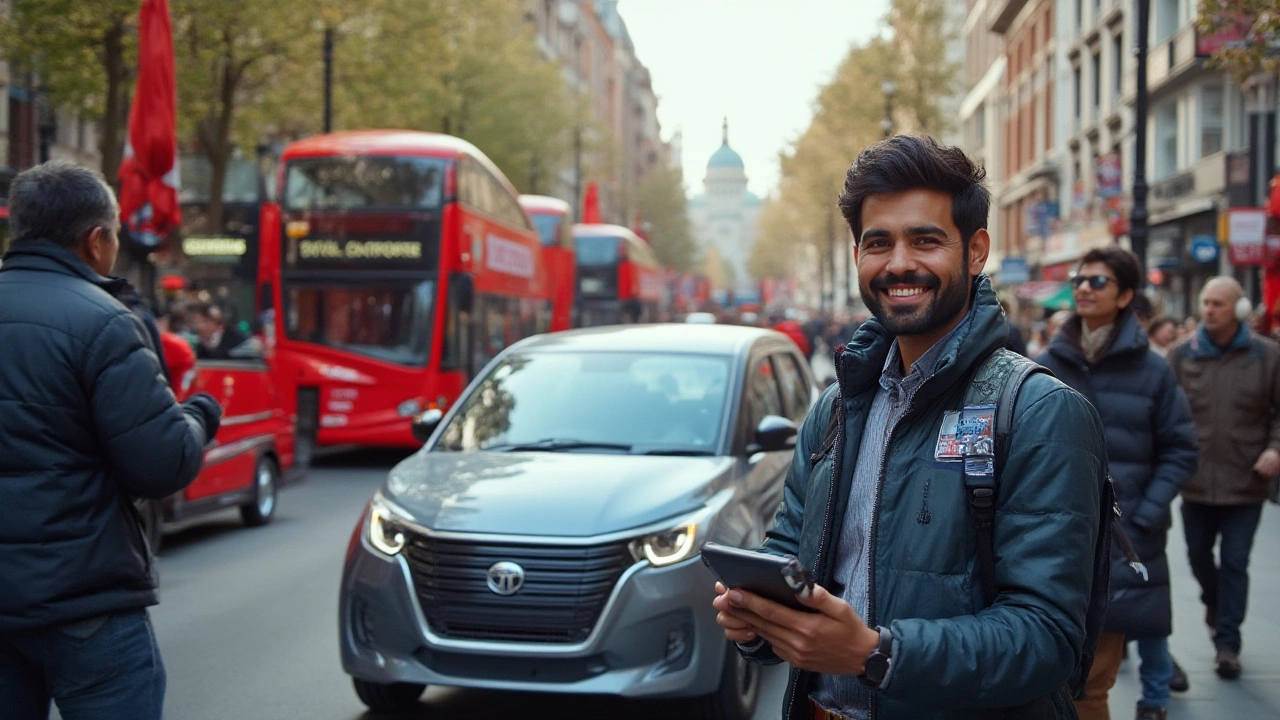
Picture this. You spot a hatchback in England, a stylish SUV in South Africa, and a sturdy compact in Indonesia—all carrying the Tata badge. For a long time, most people thought Tata Motors was just another Indian company, catering to local needs and tastes. But these cars are quietly making waves outside India. It’s not a one-off thing or a short export stunt. Tata Motors has seriously worked its way into foreign markets, and if you pay attention, you’ll realize Tata's ambitions are global. Bigger than you’d guess, actually. Now, maybe you’re curious which countries have Tata cars, what kinds are sold abroad, and just how big Tata’s footprint is outside India. Let’s break it all down and see what’s really going on with Tata on the world stage.
Tata Cars on the World Map: Where Are They Sold?
Take a drive through the streets of Johannesburg or Nairobi, and you might spot a Tata Indica zipping through traffic. In South America, some commercial vans and pickups sport the familiar “T” logo. Tata Motors may be headquartered in Mumbai, but its wheels roll far and wide. The company sells passenger and commercial vehicles in over 125 countries across Europe, Africa, the Middle East, Southeast Asia, South America, and even a few corners of Australia.
Now, for some specifics. In South Africa, Tata’s been around since 1998, and their models—think Xenon, Bolt, and Safari Storme—are familiar to cab drivers, families, and farmers alike. Bigger cities in the UAE feature Tata buses shuttling kids to school and professionals to work. Indonesia, Sri Lanka, Vietnam, and the Philippines all get Tata cars shipped straight from Indian factories. Back in Europe, Tata sold the Indica and Indigo for years in the UK, Spain, and Italy; you might still spot a used Tata here and there, especially from the days when the Indica V2 was quietly marketed under names like CityRover in Britain.
Tata’s even stronger in commercial vehicles. Their heavy trucks, buses, and pickups are visible in over sixty countries. Think Nigeria, Senegal, Bangladesh, Myanmar, and Russia. This global push wasn’t an accident; Tata Motors set up assembly plants, distributors, and service centers in many of these spots. The company tailors some vehicles for specific regions, like the Xenon pick-up for Thailand or the LPT truck for African roads. Fleet operators abroad love Tata for the same reason as Indian buyers—these vehicles don’t cost an arm and a leg to buy or fix, and they just keep going.
Export Tactics: How Tata Grew Beyond India
Tata didn’t just wake up one day and decide to send cars abroad. The export game started with commercial vehicles in the late 1960s—the iconic Tata trucks powered projects across Africa and the Middle East. By the 1990s, Tata figured out that there was a real appetite for affordable cars in emerging markets. So, they launched with the Indica, sent a few batches to South Africa, and found success quickly enough to justify factories and showrooms there. By the 2000s, Tata had set up fully-owned subsidiaries in places like Thailand, South Africa, and the UK, along with joint ventures in Bangladesh, Nigeria, and Morocco.
One of Tata’s smartest moves? Adapting cars for local conditions. Heating systems for cold Russian winters. AC units for Middle Eastern heat. Changed right-hand and left-hand drive layouts for different markets. Not every company goes the extra mile here, but Tata knew it was crucial if they wanted their vehicles to fit in and last. You see, not every road is as smooth as a Mumbai freeway, and not all fuel matches Indian standards. Tata sometimes tweaks suspensions, changes safety controls, and builds more rugged exteriors for export models.
Of course, moving people is only one part of Tata’s plan. The commercial trucks and buses are a backbone. In fact, in 2022, Tata Motors reported that nearly 35% of their commercial vehicle revenue came from international operations. The brand doesn’t just export trucks; they assemble them locally through CKD (Completely Knocked Down) kits in foreign plants—meaning most parts are made in India and shipped for assembly. This saves on import taxes and lets Tata adapt the final product for local needs. Plus, they can train service mechanics abroad and make sure parts are always on hand.
Check out how Tata’s exports have evolved over the past decade:
| Year | Total Vehicle Exports | Top Export Markets |
|---|---|---|
| 2015 | 53,571 | South Africa, Nepal, Sri Lanka |
| 2018 | 58,969 | South Africa, Bangladesh, Vietnam |
| 2021 | 45,229 | Indonesia, Middle East, Africa |
| 2023 | 61,906 | Africa, South-East Asia |
Notice that the numbers bounce around, but the focus remains—build a reliable, budget-friendly workhorse and you’ll always have customers overseas. Even as competition has heated up, Tata’s still keeping the export lines buzzing.

Popular Tata Models Outside India
Some Tata cars have found a devoted international fan base. Let’s start with the Indica. When it came out in the late 1990s, it was the first truly Indian-designed and engineered hatchback to hit export markets. In the UK, a badge-engineered version known as the CityRover sold in the early 2000s. Over 60,000 Tata cars have been shipped to South Africa since launch, with Indica and Indigo leading.
The Xenon pick-up is another export hero. Farmers, contractors, and even emergency services have used it from Thailand to Chile. It’s cheaper than Japanese rivals and straightforward to fix. The Tata Safari, an SUV, has become something of a status symbol in African and South Asian markets—solid, roomy, and built for rough terrain.
But Tata’s biggest export wins come from its commercial vehicles—trucks, buses, and commercial vans. The Tata LPT series trucks and Ultra buses see heavy use in Africa, the Middle East, and Southeast Asia. Many cities rely on Tata buses for school runs and public transport. In the Philippines, Tata Ace mini trucks are everywhere, often converted to mobile food stalls or delivery vans. Some places even use them for ambulance conversions.
You might be surprised, but Tata’s electric vehicles are starting to make an entry into Nepal, Bhutan, and some parts of Africa, where governments are pushing for cleaner public transport. The Tigor EV, in particular, is used by taxi fleets in Kathmandu. It’s baby steps, but Tata is eyeing the future with full intent.
Why You Don’t See Tata Cars Everywhere in the West
So, why aren’t there neighborhoods full of Tata hatchbacks in North America or Germany? The short answer—a mix of strict regulations, customer behavior, and fierce competition. Europe and the US have tight safety and emissions rules, and adapting cars for these is expensive. Tata has flirted with broader European sales, especially in the UK, but it didn’t quite take off. For instance, after buying the Jaguar and Land Rover brands in 2008, Tata put most of its Western focus into making those luxury brands excel, rather than selling its own entry-level models.
There’s another thing—brand perception. In the US or Western Europe, new car buyers tend to favor brands with sporty, stylish, or luxury cues. Tata is seen more as a maker of functional, durable, affordable transport, like the vehicle equivalent of a sturdy bicycle. That’s a good thing in places where running cost and long life matter most, but it’s a tougher pitch in crowded, mature markets.
Still, Tata Motors didn’t back off totally. They keep a presence in select European markets, mostly focused on commercial vehicles, and quietly study regulatory changes. They’re holding onto the experience, tools, and lessons needed if a big push into these regions ever makes sense again. And by the way, Tata’s indirect presence in the West is huge: they own both Jaguar and Land Rover. So, next time someone in London rolls up in a posh Range Rover, technically, that’s another Tata success.

Insider Tips and Fun Facts About Tata Abroad
Here’s something that stumps even seasoned car fans: Tata’s passport is full of stamps. At one point, you could buy a Tata Nano in Madagascar and a Tata Safari in Nigeria—same brand, two wildly different continents and uses. In Myanmar, a government program used Tata buses to modernize intercity travel. In Brazil, Tata tried a short-lived partnership, and although it didn’t stick, it turned heads for a while.
If you’re ever buying a used car in South Africa, Sri Lanka, or Bangladesh, Tata models are everywhere—often the lowest-priced used options by age or mileage. Taxi operators in parts of Africa swear by Tata vehicles for low running cost and ease of getting repairs done, simply because basic mechanics can fix them with off-the-shelf tools.
Here’s a neat detail: Tata’s move into foreign markets opened tons of support jobs for local workers, from mechanics and drivers to parts suppliers. That’s no small change. Local economies in a few places—think Tanzania, Senegal, or Vietnam—got a genuine boost from Tata’s export drive.
Thinking of bringing a Tata car into your country? Make sure to check the combination of emissions rules, local import laws, and whether there are enough service centers around. Some enthusiasts love importing the rugged pickup trucks that aren’t even sold officially in Europe, for use on farms or as project cars.
And here’s a thing most people miss: When Tata entered the UK market with the CityRover (their tweaked Indica), it was built for city motoring—cheap, light, good on gas. The British auto press didn’t go easy on it, but cabbies in London liked the cost savings. Plus, if you know your way around cars, Tata engines are remarkably simple to maintain, even by DIY standards.
Tata may never have the brand flash of Toyota or Volkswagen, but they’re in the game for the long haul, racking up export milestones and quietly building a reputation for bang-for-buck reliability. Who would bet against them as the auto world turns electric? Keep an eye out for Tata’s name in places you’d least expect—the company’s global journey is far from over.